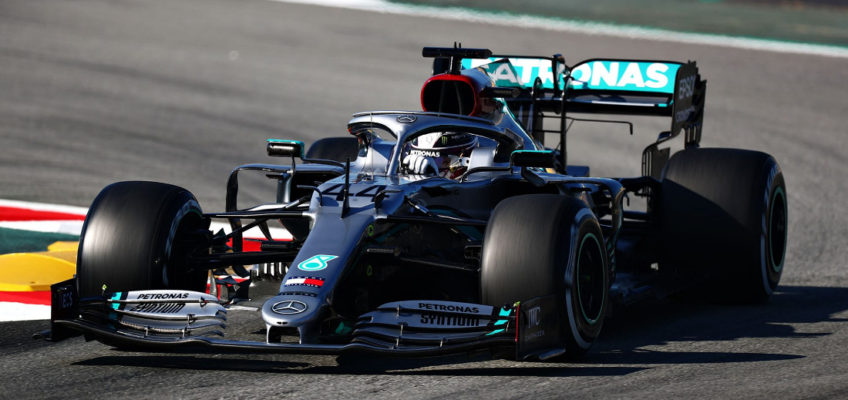It all happened after the publication of some images captured by Lewis Hamilton’s W11 on-board camera. While on the home straight, the six-time champion made an unusual movement with his steering wheel, pulling it towards his chest. Watching the film, it seemed as if the steering bar could be extended in order to allow it to come closer and have a greater movement span.
The news spread on the paddock like wildfire and was received with a mix of panic, outrage and resignation in equal measure. Initially, nobody was sure about what the new gadget was for, but everyone knew it would better the performance of the German cars even more.
Shortly thereafter, and in the wake of the upheaval caused by the images, the ‘secret’ was revealed. Baptized as DAS (Dual Axis System), this revolutionary system allows the alignment of the front wheels to be adjusted by the driver pulling and pushing on the steering column.
When pulled, the wheels move into a straight position, offering less resistance. On the contrary, when the steering wheel is pushed back these return to their traditional toe-out position, more stable in the bends.
Although the German team has not explained the details of their new device it all points that the variation in the degree of convergence of the tires will allow to optimise the life of the compounds.
https://twitter.com/MercedesAMGF1/status/1230504146064814081
The DAS would seek to minimise the heating of the rubbers in the straight sections of the track while at the same time, increase their grip when braking at the slower sections. Precisely, the thermal performance of the compounds was one of the main concerns for all of the teams during last season, including Mercedes.
“It just introduces an extra dimension for the steering, for the driver, which we hope will be useful during the year” – said James Allison, director of the team from Barcley, who made their intentions clear regarding its use during the competition.
The British technician made its opponents even more scared – and depressed – with his concluding remarks: “It is fun to provide these types of solutions even if they are only the tip of the iceberg.”
Mercedes’ rivals against the DAS
The other teams have been quick to voice their opinions about the DAS. The discovery of the new device caused a wave of astonishment, rejection and pessimism (in that order) in the paddock.
One of those showing his disagreement with the new ‘invention’ was Helmut Marko. The Red Bull boss, who seems to have forgotten about the barely legal solutions that his own designer Adrian Newey tends to come up with, had the following to say: “It functions as an active suspension, and therefore it is illegal.”
In a more restrained tone, German Ferrari driver, Sebastian Vettel, expressed: “Although I may be underestimating it, I don’t think it is a passport to victory. There are many other elements involved in the creation of a competitive car”.
Be that as it may, this new technology appears to be a new blow to Mercedes’ adversaries who want to prevent the German team from conquering its seventh consecutive individual and manufacturer crowns.
Images: Mercedes AMG Petronas F1.





Leave a Reply